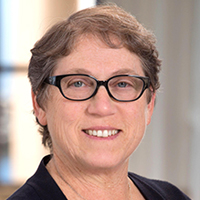
When I was growing up, I really wanted two superpowers: To fly and to be invisible. Little did I know that someday I would be granted one of those powers, because as a 67-year-old woman, I am often simply invisible.
I’ve heard this from other women, especially, as they age, that they seem to have disappeared from the field of vision of younger generations. Sometimes, it’s actually quite lovely to be able to scoot in under the radar and have that sense of freedom that allows us to be ourselves without constantly overthinking how others view us.
No judgment is quite freeing, right? However, there’s a dark side to this as well.
Not being seen means not being heard. Not being heard means that we are corralled into someone else’s view of what we need and what is best for us (without a lot of focus on what we actually want).
It’s like the cartoon where the Boy Scout insists on walking an older woman across the street, even though she’s hitting him with her cane and shouting that she didn’t want to cross the street! He was determined to do that good deed — or should I say, his preconceived notion of what that good deed should look like.
So the danger, the dark side, is that by projecting our own ideas of what is “good for” our aging clients, we are actually doing a great disservice to them and to their families.
Our profession shares this worry with the medical profession. As aging patients, we don’t want to be seen as hypochondriacs. However, our bodies are aging, our minds are less flexible and, ironically, we need to be “seen” more than ever. Important (sometimes life-saving) information, options and steps need to be communicated and understood. Follow-through and follow-up matters!
“So the danger, the dark side, is that by projecting our own ideas of what is ‘good for’ our aging clients, we are actually doing a great disservice to them and to their families.”
Similarly, our planning clients also need to be seen and heard as they age just as much if not more than when they were younger.
As a 67-year-old, I am painfully aware that I don’t have time for do-overs.
Those of us on the “other side” of middle age often want to be fiscally secure and simultaneously generous, while giving a nod to the realities of being investors in an unpredictable, ever changing economic world and tax environment. Hopefully as we’ve aged we’ve also grown our net worth; but that result leads to the need for heightened purposeful, comprehensive, informed planning and actions.
And let me say it again: No time for do-overs!
So how can we be our best professional selves and truly serve our clients well during their later years?
Be Truly Present
First, be truly present. Ask leading questions. Really listen to answers. Ask follow-up questions. Provide information when appropriate (not to show off). Offer examples of what other clients you have worked with over the years in similar situations have done and the outcomes they experienced.
Think about all the areas that encompass comprehensive wealth management and how they interlace, creating an all-inclusive conversation or series of conversations that address each topic that could possibly matter. Send out a written summary of what you discussed and next steps with a timeline. Do the next steps (or hold others who should do them accountable) and keep the communication going!
Involve Other Trusted Professionals
Second, involve their other trusted professionals whenever it’s right to do so. Be sure you have clients’ permission before reaching out because while you may be working for an AUM-based fee, their other advisors are typically charging hourly.
Organize collaborative meetings either via phone, webinar or in person. Invite and encourage participation by creating and sharing an agenda that includes facts, questions, concerns, thoughts and goals to be achieved by this collaboration. Provide any helpful written information, such as net-worth statements that include tax basis, to all participants.
Also provide participants with your tentative agenda, well before the meeting, and ask what else should be added or provided.
Lead the meeting so that everyone brings their best ideas and open mind, not getting bogged down or off point, and then close with a final high level summary agreeing on next steps including deadlines and who owns what follow up.
After the meeting, send out a summary of every participant’s conclusions, their next steps and timeline. Then take the lead by being in charge of a collaborative follow-up process while keeping everyone on task!
Involve Trusted Family Members
Third, and again with client permission, involve trusted family members who may be tasked someday with being a co- or successor trustee, or executor/executrix. Sometimes my clients have asked personal friends to these meetings as well. I have often found that while the collaboration with their other trusted advisors is certainly invaluable, the meetings that involve loved ones are frequently the most telling.
Observations of our families or very close friends can help bring to light issues that clients whom we think we know so very well, may be ignoring or hiding not just from us, but possibly even from themselves. And by shining the light on these issues, important work and workable solutions can be achieved.
From this point forward, you are now planning with a client who is in their later years and so it’s appropriate for you to modify your thinking about meeting frequency, communication style, who to keep informed, how to measure accomplishments and how to embrace change for each client as suitable to their unique situation.
And not only should you document everything for your own records, you should document everything in writing to your client, their trusted advisor(s) and family members using a simple style with checklists and deadline dates. Task yourself for all-important follow-up and dates, and be sure to keep your own team involved and in the loop as well. They are often your best eyes and ears.
Treasure Each Client
Last but not least, be sure your client understands how valued and “heard” they are, and how much you want them to reach out whenever you can possibly help. If you’ve had the privilege of working together for many years, this can be one of the most satisfying times of your relationship as their advisor.
And if this is a more recent client, then don’t be shy — ask every possible question including personal topics, such as how many pets they have, their family (notice whom I mentioned first!), what they love to do, their health and their goals with the remaining time they have.
This is also the time for you to open up and become vulnerable. You don’t need to reveal deep personal issues, but shared journeys such as ailing parents, expensive pets, a love of travel and grandchildren can make all the difference in your ability to be relatable and thus helpful on all levels.
Thank you for helping those of us in our “post middle age” (sorry, I just can’t say “golden”) years shed the cloak of invisibility and receive the assistance we truly need, even when we are uncomfortable asking for that help. What a difference you make!
Lynn Ballou, CFP, is a Senior VP/Partner with EP Wealth Advisors in the Northern California East Bay Area.







